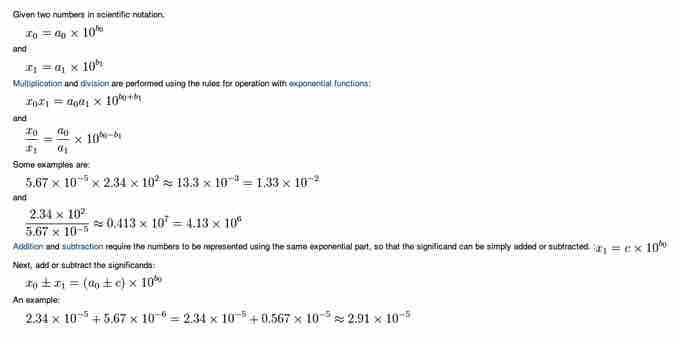Scientific Notation
Scientific notation is a more convenient way of writing very small or very large numbers. The general representation for scientific notation is
To express a number in scientific notation, you move the decimal place to the right if the number is less than zero or to the left if the number is greater than zero.For example, in 456000, the decimal is after the last zero, so to express this in scientific notation, you would need to move the decimal to in between the 4 and 5.
The decimal would move five places to the left to get 4.56 as our
In order to go between scientific notation and decimals, the decimal point is moved the number of spaces indicated by the exponent. A negative exponent tells you to move the decimal point to the right, while a positive exponent tells you to move it to the left.
Examples of scientific notation:
- 0.0001 = 1 x 10-4
- .0256 = 2.56 x 10-2
- 4759000 = 4.759 x 106
- 5000 = 5 x 103
Another way of writing this expression, as seen on calculators and computer programs, is to use E to represent "times ten to the power of." An example is shown here:

Scientific notation for Avogadro's number
Here is an example of scientific notation on a calculator. 6.02E23 means the same thing as 6.02 x 1023.
Scientific notation enables comparisons between orders of magnitude. As seen above, scientific notation uses base 10, and if a number is an order of magnitude greater than another, it is 10 times larger. For example, 4.759 x 106 is 3 orders of magnitude bigger than 5 x 103; it is 8 orders of magnitude bigger than 2.56 x 10-2.
Basic Math with Scientific Notation
Basic operations in scientific notation are carried out in the manner one would carry out exponential functions. Multiplication and division adds or subtracts exponents, respectively. Addition and subtraction require the exponents to be the same. A few examples are shown here:

Basic operations
Basic operations, such as multiplication and addition, are done the same way as with exponentials.